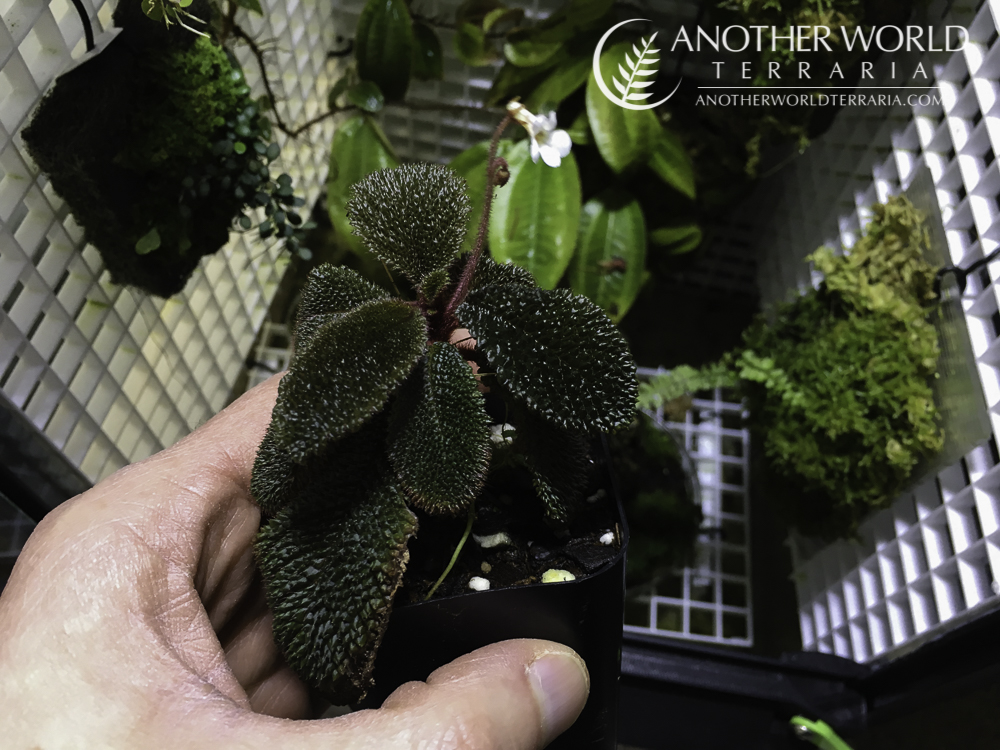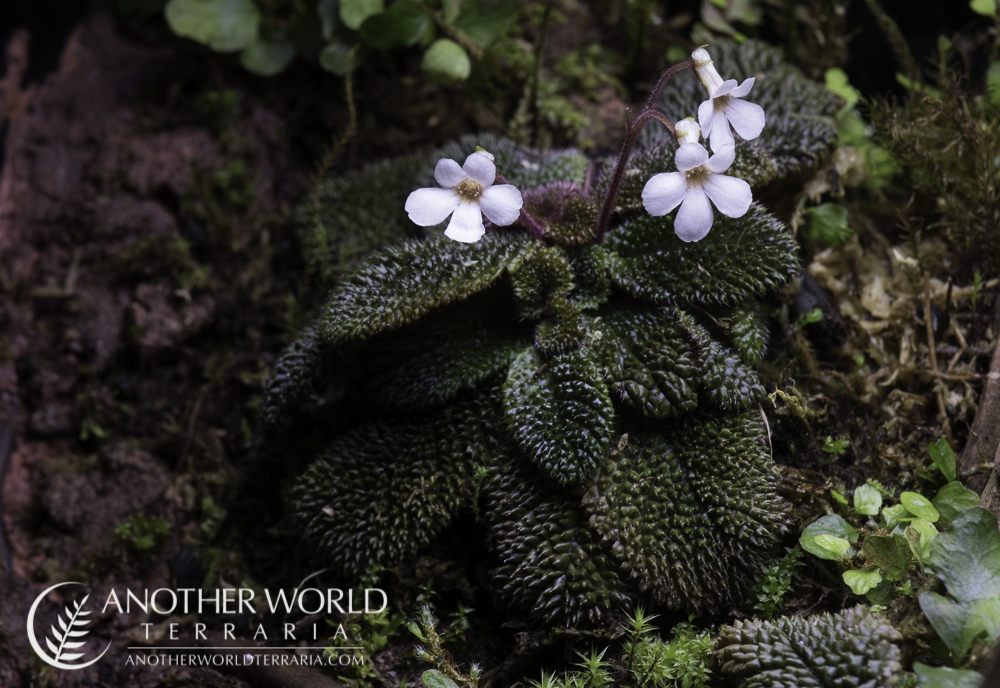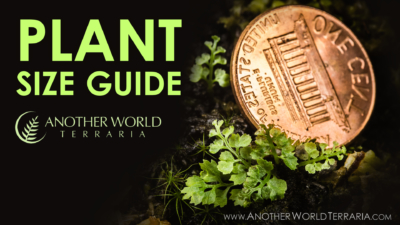Genus
Reldia See All Search SiteSpecies
minutifloraTaxon Family
GesneriaceaeOrigin of Taxon
Costa Rica, Panama, Colombia, Ecuador, PeruGrowth Habit
Rosette, ClumpingImages
-

Reldia minutiflora in bloom
-

Reldia minutiflora flower close up
-

Reldia minutiflora leaf texture close up
-

Reldia minutiflora blooming
-

Reldia minutiflora blooming
-

Reldia minutiflora held in hand for size scale
-

Reldia minutiflora grown in bright light
-

Reldia minutiflora baby plants on leaf cutting
-

Reldia minutiflora in bloom, growing in the Crown Forest Terrarium
-

Crown Forest Terrarium by Another World Terraria
Description
Reldia minutiflora is a delightful, miniature gesneriad, which has attractive foliage and cute flowers.
This species is relatively compact and creates a nice mounded specimen.
Its native range is Central and South America.
Due to its small size and love for humidity, Reldia minutiflora is a wonderful plant for growing in terrariums. For an example, see my Crown Forest terrarium, featured in the photos section on this page, as well as in my portfolio.
Foliage
The leaves are stunning in texture and color. Their upper surface is completely covered in small, stiff, hairlike protuberances, giving them a rough and prickly texture, and their undersides and other portions of the plant are laden with small red hairs. The foliage color varies depending on light levels and other factors (see later info about light).
Growth habit
The plant forms a rosette of leaves, but often forms side shoots with more leaves and rosettes, creating a small clump over time.
Flowers
Reldia minutiflora gets adorable, small, white flowers on stalks with red hairs. See the image gallery for a macro photo of a minutiflora bloom.
Culture info
Substrate
Reldia minutiflora prefers a well drained but moist substrate, such as a mix of peat, fine orchid bark, perlite, and perhaps a small amount of shredded sphagnum. You can browse the substrates list on my Amazon page to see all of the exact substrates that I use for my plants and terrariums.
It should be kept evenly moist, never wet, and should not be allowed to dry out.
Water
An occasional light misting of water on the foliage is fine, but in general it is probably best to water Reldia directly at the roots. If the leaves get wet, they should be allowed to dry out relatively quickly. One pro tip for hitting the roots and not the foliage is to use a wash bottle. I use these wash bottles from Amazon.
Humidity
Reldia minutiflora prefers high humidity, so it does well in grow bins and terrariums. Check out my grow bin tutorial to learn more.
Light
This plant looks healthiest when grown in medium to low light. Light levels affect the plant’s size and coloration.
In lower light, the leaves can vary from a very dark green to a bright, vibrant green. In medium-bright to bright light they can include brown, bronze, and red. See image gallery for an example of a plant grown in medium-bright light.
In bright light, the plant tends to stay smaller and more compact, whereas in very low light the leaves generally get slightly larger and the plant grows in a slightly more open shape.
By the way, I have a video that shows and discusses the lights I use for my plants.
Air
Air movement isn’t necessarily required to grow this plant, but it does seem to grow well with a small amount of circulation, provided that the humidity levels are high. Air flow also helps dry off the foliage if it gathers standing water from misting.
Fertilizer
Reldia has an average level of nutrient demand as compared to most other small tropicals. It does well with a diluted liquid fertilizer or a small amount of granular fertilizer such as Osmocote Plus. See my plant fertilization video for more info, or pick up some of my recommended fertilizers on Amazon.
Propagation
Reldia, like most other gesneriads, can be grown from leaf cuttings, although I’ve found leaf cutting propagation a bit challenging with this species. Simply pull or cut a leaf off the plant with as much petiole as possible, lay it down on a moist but well-drained substrate with the broken end covered, keep it humid, and wait. Occasionally some leaves will die off, so it’s helpful to start multiple leaf cuttings at the same time to ensure at least some take. See image gallery for a photo of a successful leaf cutting. I like to use deli containers for leaf cuttings, whether they be round with snap on lids, or the hinged clamshell style. Some of the ones I use are listed on my Amazon page containers list.
Where to Buy
References
- GBIF search for "Reldia minutiflora"
- Kew Plants of the World search for "Reldia minutiflora"
- WikiSpecies search for "Reldia minutiflora"





